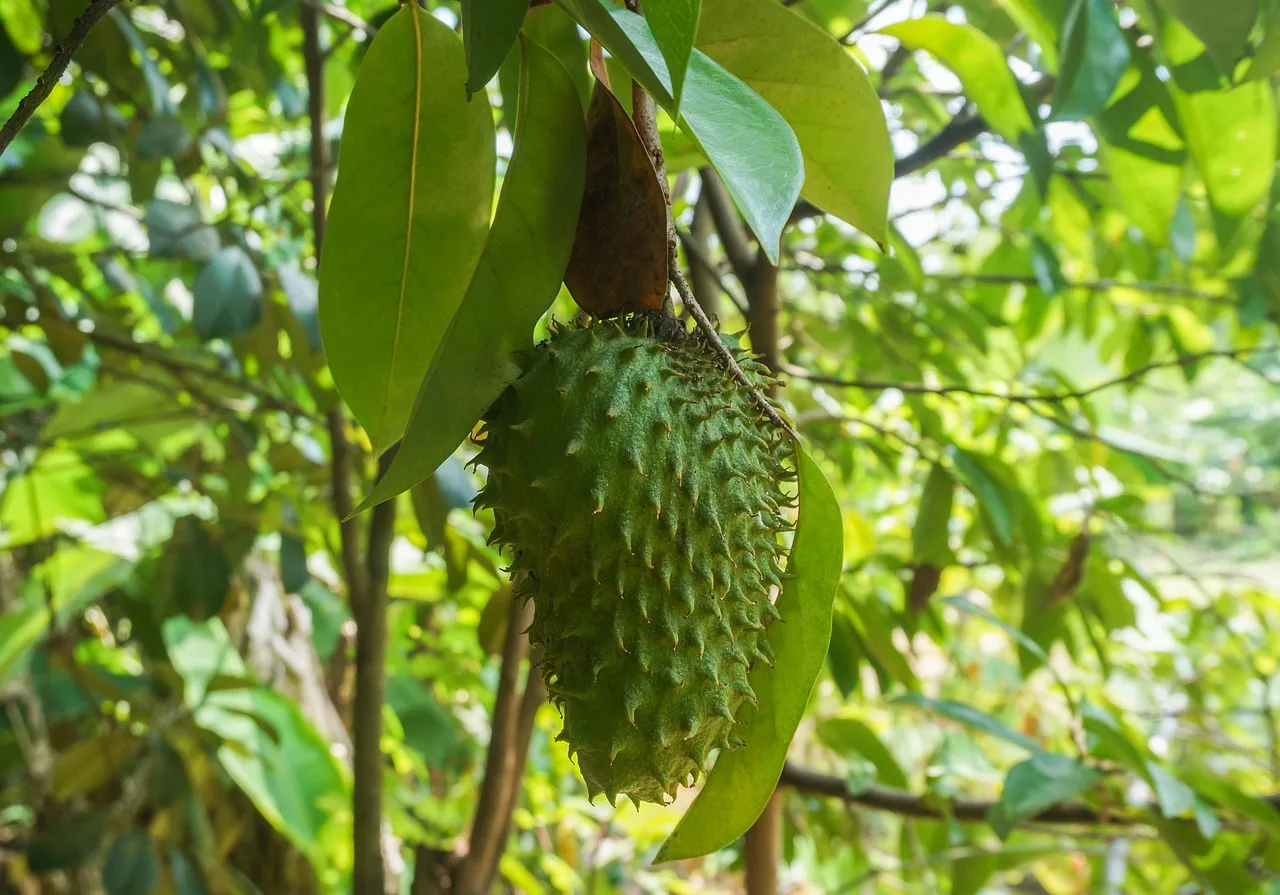
The soursop tree, scientifically known as Annona muricata, is a tropical fruit tree native to Central and South America. Its large, green, spiky fruits are highly sought after for their unique flavor and numerous health benefits. Growing your own soursop tree can be a rewarding experience, allowing you to enjoy the delicious fruits right from your backyard. In this article, we will guide you through the process of growing a thriving soursop tree, from seed to harvest.
Benefits of growing a SoursopTree
Aside from the pleasure of having fresh, flavorful fruits at your fingertips, there are many other benefits to growing a soursop tree. The soursop fruit is rich in vitamins C and B, as well as minerals like potassium and magnesium. It is also known for its high antioxidant content, which may help protect against chronic diseases and boost the immune system. Furthermore, it is aesthetically pleasing, with its glossy foliage and attractive flowers that emit a delightful fragrance. By growing it, you not only enhance your garden but also improve your overall well-being.
Choosing the right location for your soursop tree
When selecting a location for your soursop tree, it is essential to consider its specific requirements. They thrive in tropical and subtropical climates, where temperatures range between 68°F and 86°F (20°C and 30°C). They prefer a spot with full sun exposure for at least six hours a day. Additionally, it requires well-draining soil to prevent root rot. It is also advisable to choose a location that is sheltered from strong winds, as the tree’s branches can be brittle and prone to breakage.
Soil preparation for SoursopTree cultivation
Preparing the soil is crucial for the successful cultivation of a soursop tree. The ideal soil pH for soursop trees ranges from 6.0 to 6.5, slightly acidic to neutral. To achieve this, you can amend the soil with organic matter, such as compost or well-rotted manure. This will improve soil structure, drainage, and nutrient content. It is also beneficial to perform a soil test to determine the nutrient levels and make any necessary adjustments. Adequate soil preparation will provide a solid foundation for your soursop tree to grow and thrive.
Planting and caring for your SoursopTree
To start growing your soursop tree, you have two options: planting seeds or buying a young sapling. If you choose to grow from seed, make sure to use fresh seeds obtained from a reputable source. Soak the seeds in water for 24 hours before planting to improve germination rates. Plant the seeds in a well-draining potting mix, covering them with about 1 inch of soil. Keep the soil consistently moist, but not waterlogged, until the seeds germinate, which usually takes around 2 to 4 weeks.
Once your soursop tree has established itself, proper care is essential for its continued growth and development. Water the tree regularly, aiming for deep, thorough watering rather than frequent shallow irrigation. Fertilize the tree every three months with a balanced, slow-release fertilizer to provide the necessary nutrients. Mulching around the base of the tree will help retain moisture, suppress weeds, and regulate soil temperature. Regularly inspect your soursop tree for signs of pests or diseases, and take appropriate action if necessary.
Pruning and training techniques for optimal growth
Pruning and training your soursop tree is crucial for maintaining its shape, controlling its size, and encouraging optimal growth. Start pruning your tree when it is young to establish a well-structured framework. Remove any dead, damaged, or crossing branches to improve airflow and reduce the risk of disease. Prune back the top of the tree to encourage lateral branching and bushier growth. As the tree matures, continue to thin out the canopy to allow light penetration and improve fruit production. Regularly remove any suckers or water sprouts that may emerge from the base of the tree.
Common pests and diseases of the soursop tree
While soursop trees are generally resilient, they can still be susceptible to certain pests and diseases. One common pest is the fruit fly, which lays its eggs in the fruit, causing it to rot prematurely. To prevent fruit fly infestations, you can cover the developing fruits with paper bags or use organic insecticides specifically formulated for fruit flies. Another common issue is anthracnose, a fungal disease that causes dark, sunken lesions on the fruit. To prevent anthracnose, ensure proper airflow around the tree and remove any infected fruits or branches immediately.
Harvesting and enjoying the fruits of your labor
After months of care and patience, the time will finally come to harvest the fruits of your labor. Soursop fruits are ready to be harvested when they are fully grown, firm to the touch, and slightly yellow-green in color. Gently twist the fruit from the branch, taking care not to damage the stem or surrounding branches. Once harvested, soursop fruits can be stored at room temperature for a few days to ripen further. They can also be refrigerated for up to a week. Soursop fruits are best enjoyed fresh, either eaten as is or blended into refreshing smoothies and desserts.
Soursop tree maintenance and ongoing care
Even after harvesting, your soursop tree will require ongoing care to ensure its continued health and productivity. Regularly check the tree for signs of nutrient deficiencies and adjust fertilization accordingly. Monitor the moisture levels in the soil and adjust watering as needed, taking care not to overwater. Keep an eye out for any signs of pests or diseases and take prompt action to prevent their spread. Prune the tree annually to maintain its shape, remove dead wood, and encourage new growth. With proper maintenance and care, your soursop tree will continue to thrive for years to come.
Conclusion and final tips for successful soursop tree cultivation
Growing a soursop tree can be a rewarding and fulfilling endeavor. By following the steps outlined in this article, you can master the art of cultivating a thriving soursop tree, from seed to harvest. Remember to choose a suitable location, prepare the soil adequately, and provide proper care throughout the tree’s life cycle. Regular pruning, monitoring for pests and diseases, and adjusting watering and fertilization will ensure optimal growth and fruit production. With patience and dedication, you will soon be able to enjoy the delicious fruits of your labor while reaping the numerous benefits of the soursop tree.
CTA: Start your soursop tree journey today and experience the joy of growing your own tropical fruit tree. Get your seeds or saplings from a reputable supplier and embark on the rewarding journey of cultivating a thriving soursop tree in your own backyard. Happy growing!







